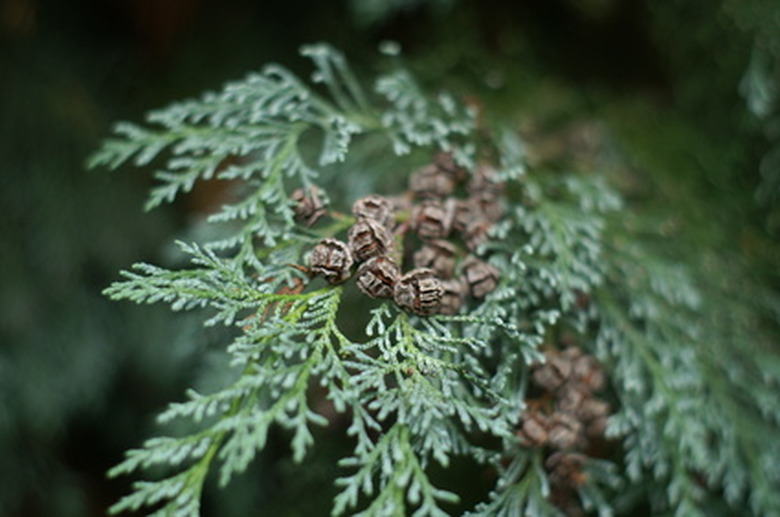Diseases In Hinoki Cypress
The hinoki cypress is a popular ornamental tree. Its dark foliage, red-brown bark and elegant branches attract attention in the landscape. This flexible tree also makes a wonderful bonsai tree for indoor enjoyment. Whether grown indoors or out, the hinoki cypress is largely impervious to disease. But very young, very old or compromised hinoki cypress do fall prey to a few diseases.
Tip Blight
Blight largely only affects very young or very young hinokis. Blight in a young hinoki cypress is a significant problem. After the initial infection, the tips of the hinoki's branches will turn brown and die back. As the disease progresses, the die-back will move through the branch and to the main trunk, and the young tree will eventually die. Old hinoki cypress may experience browning and die back in the tips of their branches, but the disease is unlikely to progress. To stop the spread of tip blight, trim the dead tissue away, making a cut about 2 inches into the healthy tissue. To discourage subsequent infection, create drier conditions for your hinoki cypress.
- The hinoki cypress is a popular ornamental tree.
- Old hinoki cypress may experience browning and die back in the tips of their branches, but the disease is unlikely to progress.
Phytophthora Root Rot
Root rot is caused by a soil-borne fungus that enters the hinoki cypress through its roots and travels to its trunk. There, the fungus eats away at the inner bark and causes the outer layer to turn a darker shade of brown. As the fungal infection progresses, viscous fluid may ooze from cracks in the darkened bark. The leaves of an infected hinoki cypress will wilt, wither and turn slightly purple. The best remedy for root rot is to improve the drainage of the soil and treat it with a fungicide prescribed for phytophthora root rot.
Seiridium Canker
Seiridium canker largely only affects hinoki cypress growing in the landscape. Unlike other cankers, seiridium cankers do not girdle branches but create long shallow cankers along the hinoki's branches. As the cankers grow, the tree finds it more and more difficult to deliver water and nutrients to its branches. Consequently, the branches wilt, turn yellow, then brown and eventually die. To stop the spread of canker, prune away the affected branches. Also take care to adequately irrigate the hinoki cypress. Seiridium canker often follows a period of drought.
- Root rot is caused by a soil-borne fungus that enters the hinoki cypress through its roots and travels to its trunk.
- Unlike other cankers, seiridium cankers do not girdle branches but create long shallow cankers along the hinoki's branches.
